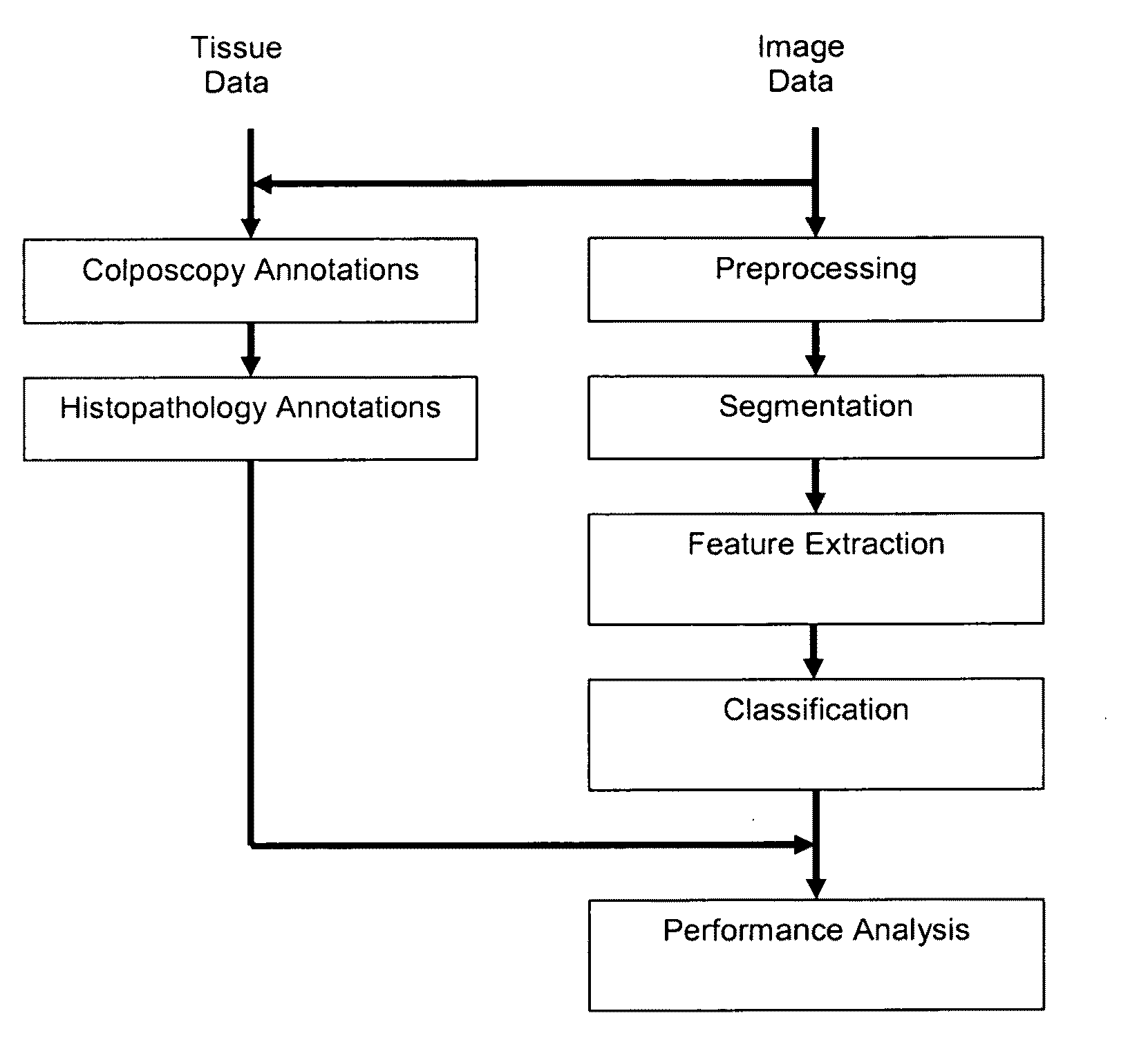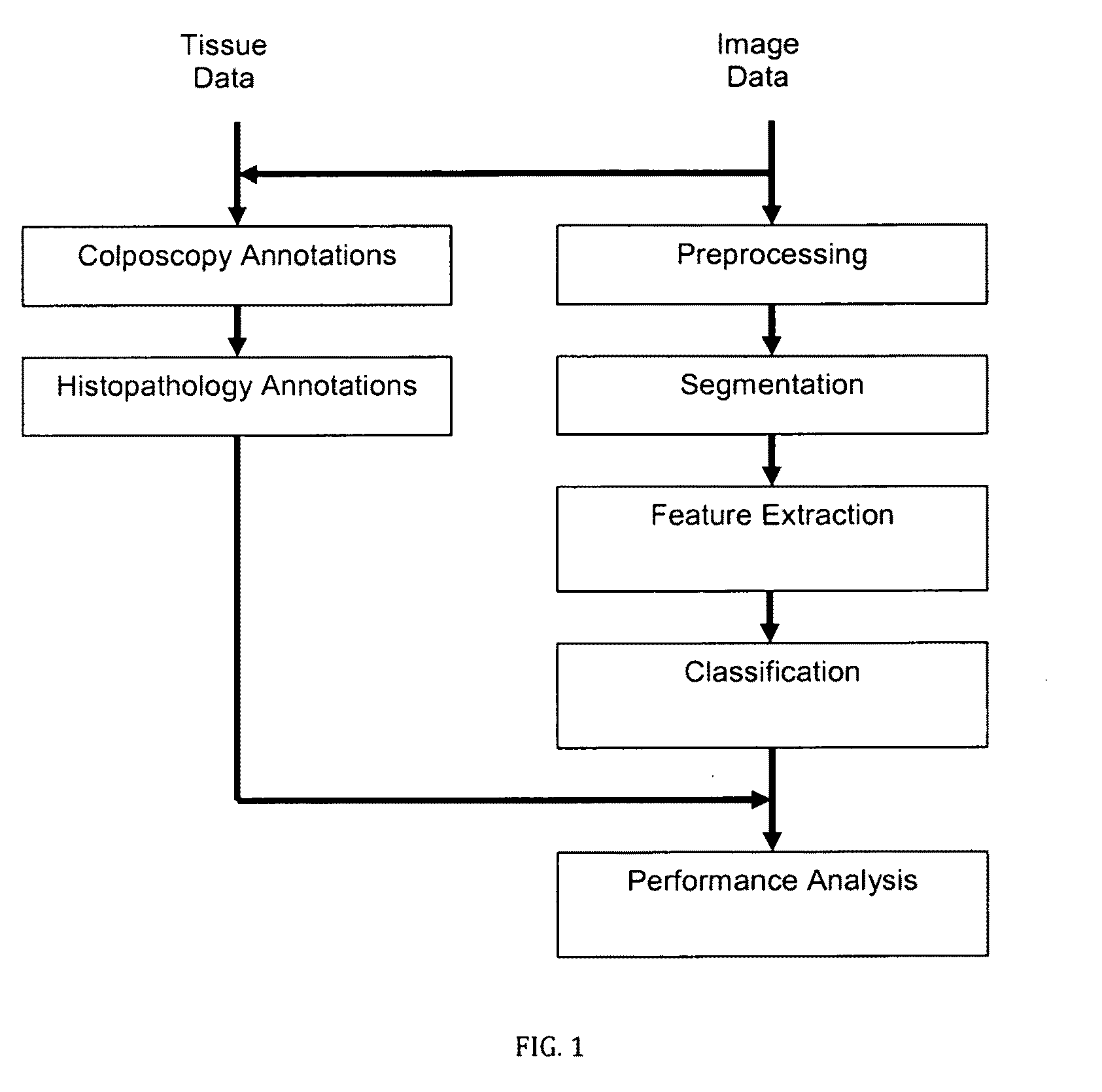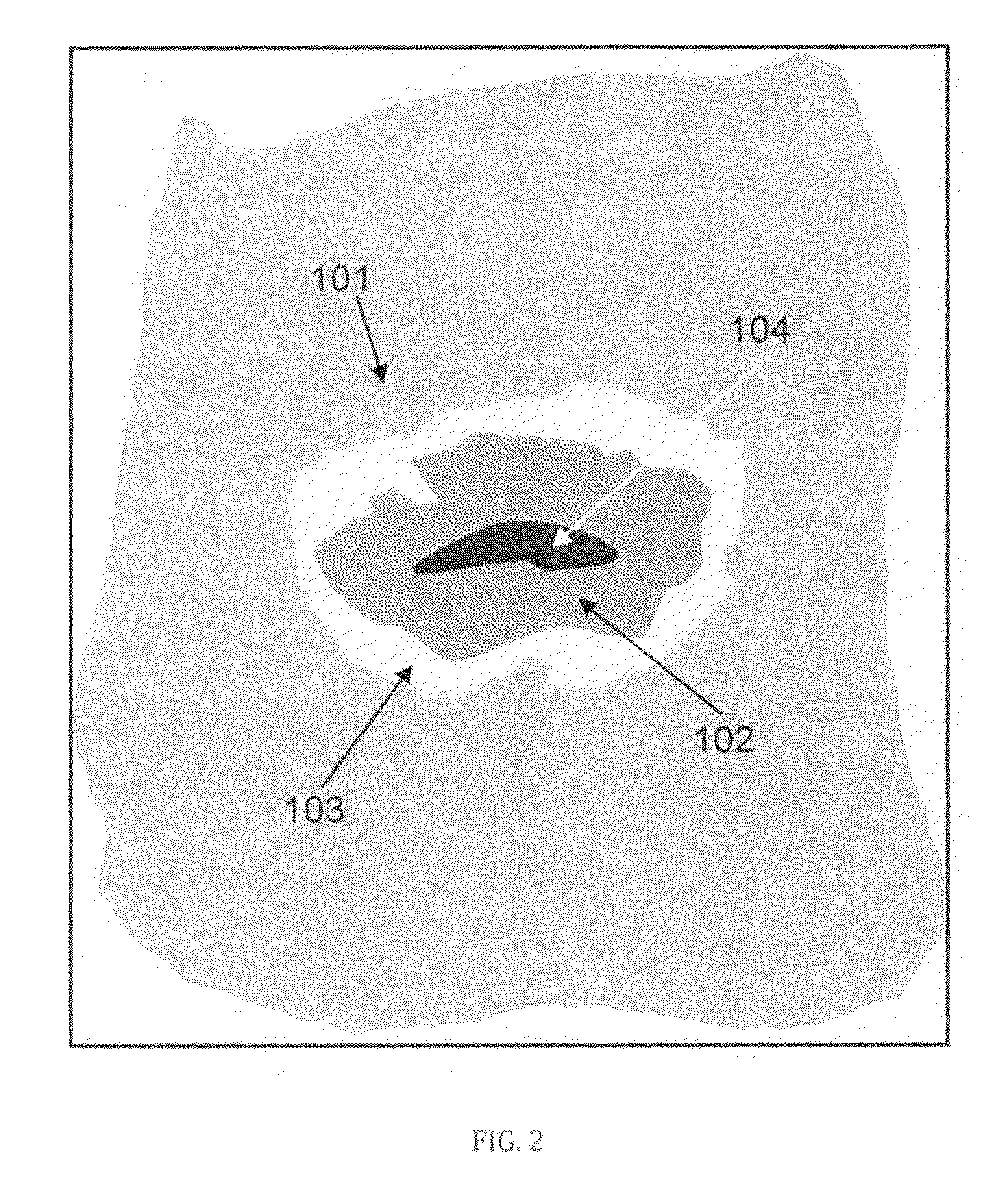Image analysis for cervical neoplasia detection and diagnosis
a cervical neoplasia and image analysis technology, applied in the field of medical imaging, can solve the problems of lack of sophisticated laboratory equipment, lack of highly trained personnel and financial resources, and large number of cervical cancer cases, and achieve the effect of high probability of cervical neoplasia
- Summary
- Abstract
- Description
- Claims
- Application Information
AI Technical Summary
Benefits of technology
Problems solved by technology
Method used
Image
Examples
Embodiment Construction
[0054]The presently preferred embodiment of the invention presented herein discloses an automated image analysis framework, schematically illustrated in FIG. 1, for cervical cancer detection and diagnosis. The framework uses high-resolution instrumentation to acquire high quality, clinical cervical image data, as well as tissue data in the form of colposcopy and histopatology annotations. The diagnostic image analysis framework is comprised of a series of image analysis steps in which image preprocessing, image segmentation, diagnostic feature extraction and diagnostic image assessment are applied in sequential order. In the final step, a performance analysis of the diagnostic image analysis output is applied.
Instrumentation and Data
[0055]The image data used in the development of the cervical cancer detection and diagnosis framework were acquired with a digital imaging device designed specifically for the acquisition of cervical images and subsequent optical analysis ...
PUM
 Login to View More
Login to View More Abstract
Description
Claims
Application Information
 Login to View More
Login to View More - R&D
- Intellectual Property
- Life Sciences
- Materials
- Tech Scout
- Unparalleled Data Quality
- Higher Quality Content
- 60% Fewer Hallucinations
Browse by: Latest US Patents, China's latest patents, Technical Efficacy Thesaurus, Application Domain, Technology Topic, Popular Technical Reports.
© 2025 PatSnap. All rights reserved.Legal|Privacy policy|Modern Slavery Act Transparency Statement|Sitemap|About US| Contact US: help@patsnap.com



